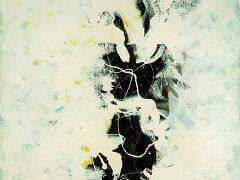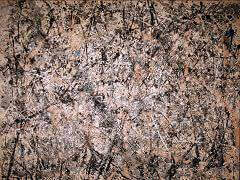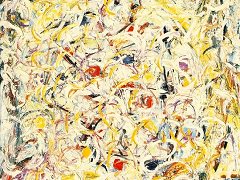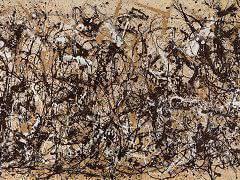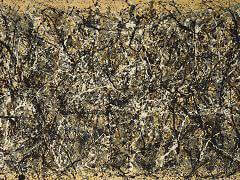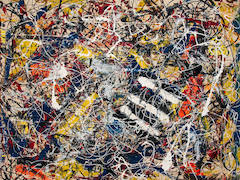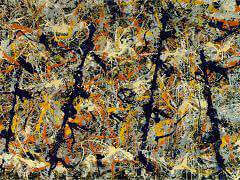Number 18, 1950 by Jackson Pollock
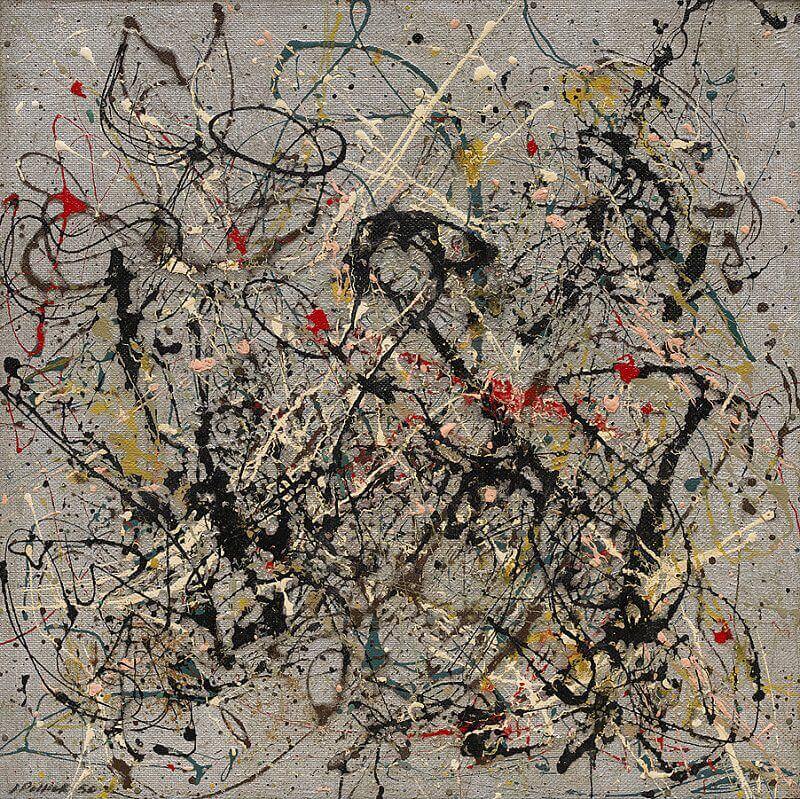
Jackson Pollock's first fully mature works - dating between 1942 and 1947 - use an idiosyncratic iconography he developed in part as a response to Surrealism. Arising from this confluence of
abstraction and figuration are Pollock's breakthrough works, commonly perceived as pure abstraction and made over the course of an explosive period between late 1947 and 1950, as in Number 18 (1950).
During this time period, Jackson Pollock started using synthetic resin-based paints called alkyd enamels, which, at that time, was a novel medium. Pollock described this use of household paints,
instead of artist's paints, as "a natural growth out of a need". He used hardened brushes, sticks, and even basting syringes as paint applicators. Pollock's technique of pouring and dripping paint
is thought to be one of the origins of the term action painting. With this technique, Pollock was able to achieve a more immediate means of creating art, the paint now literally flowing from his
chosen tool onto the canvas. By defying the convention of painting on an upright surface, he added a new dimension by being able to view and apply paint to his canvases from all directions.



